The term Euro Collection might seem unfamiliar to some, but in reality, it refers to a very specific type of collecting. As the name suggests, it involves the collection, selection, and classification of Euro coins, the currency that has been in use across Europe for several years now.
So, take the time to read and learn everything about Euro coins and how collectors classify and appraise them. It will surely be fascinating news for you and your passion for numismatics.
Catalog of Coins from Each European Nation
Introduction to Euro Coin Collecting
On January 1st, 2002, the single currency made its first appearance among the European States. The states subsequently abandoned their individual currencies. However, it’s worth mentioning that the new currency had been “present” since 1999 in Italy and other European countries.
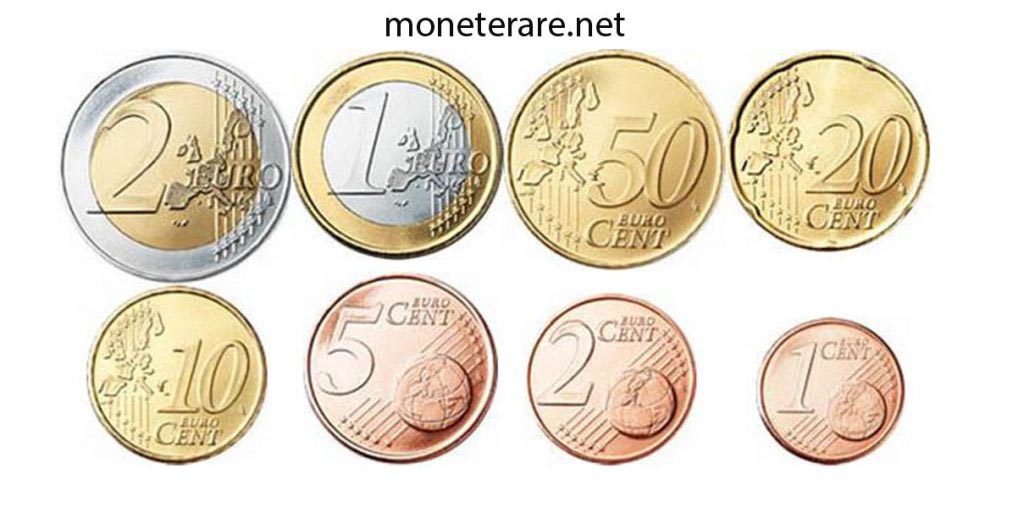
On this date, the Euro was officially recognized as the currency (although not yet physically present) and used for electronic payments, credit securities, and all transactions defined as non-physical. Additionally, on January 1st of the same year, 2 Euro commemorative coins were issued, known as “2 Euro EMU“, an acronym referring to the European Monetary Union.
History of the Euro
The history of the Euro, contrary to what one might think, has roots much “older” than its actual issuance date.
Its story begins in 1957 in Rome, the year the treaties establishing the E.E.C. were signed. This was, in essence, a preliminary version of what would later become the European Union. For more information, you can visit the official website of the European Union.
However, it was in 1988 that the Euro’s foundations were truly laid. Specifically, in this year, the European Council, which brings together Heads of State and Government of the European Community, tasked a committee, primarily composed of central bank governors and led by Jacques Delors, with developing a plan to progressively implement economic and monetary union.
In particular, three key phases were outlined:
- The first was the liberalization of capital flows by removing all restrictions on the free movement of money between member states.
- The second involved the creation of the European Monetary Institute (EMI) to strengthen relations between central banks.
- Finally, the third phase, starting on January 1, 1999, saw the gradual transition to the single currency.
The Name of the Currency: EURO
The name Euro has an interesting history that anyone interested in Euro coin collecting should know.
The official name was adopted in Madrid by the European Council in 1995 to replace the acronym ECU used until then.
ECU stood for “European Currency Unit“, a term used in official treaties up to 1978.
However, several reasons led to this name being discarded in favor of the one we all know today. The main reasons were linguistic, as ECU made sense in English but was somewhat meaningless or even cacophonous in other languages.

The acronym made sense in English, from which it was derived, and in French, as écu means shield, a name reminiscent of an old French coin. However, in other countries, it had no significance and even posed a problem in Germany. Germans would have had to call the currency ein Ecu, which sounded very similar to eine Kuh, meaning “a cow.”
Ultimately, the name Euro was chosen as it represents a simple abbreviation of the term Europe, for which the acronym is EUR.
The Euro Currency Symbol
The Euro symbol, as we all know it, also has a story and is the result of a very meticulous selection process. Initially, there were ten designs, all featuring characteristics that could define what would become the single currency’s iconic symbol.
Through a survey, the selection was narrowed down to two designs deemed the most promising. In the end, the European Commission chose the winner.
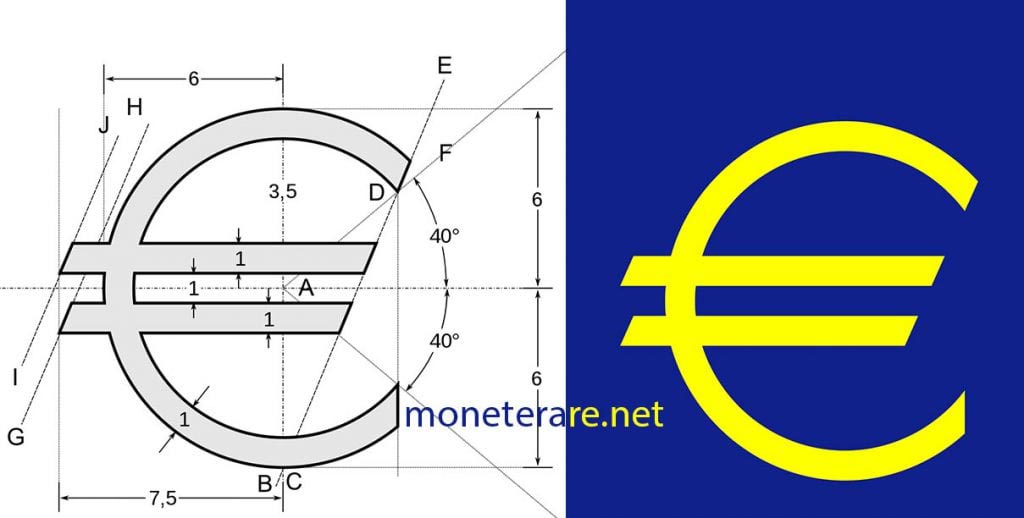
The original symbol was created by a team of four experts, though their names were never officially disclosed. Currently, the design is unofficially attributed to Belgian designer Alain Billiet.
The symbol is inspired by the Greek epsilon, referencing the “E” for Europe, with two horizontal lines representing Europe’s stability.
The glyph also has official colors declared by the European Union: yellow in the foreground and blue as the background.
Additionally, its positioning was clarified from the outset: the symbol must always be placed after the amount, separated by a space. This rule does not apply to English, Irish, Maltese, and Latvian, where the symbol is placed before the amount.

Euro Collection: The Euro Coins
So, what exactly is Euro Collection? As the term “Euro Collection” suggests, it refers to the collecting of Euro coins, which can undoubtedly be a fascinating activity. The various coins of the European Union not only differ in denominations (1€, 2€, 0.50€, etc.) but also vary from state to state.
Specifically, these coins have two faces or sides. The first is the common face, which is identical for all countries, while the second is the national face, which, as the name suggests, is unique and personalized for each nation.
The collector, Euro collection enthusiast, or numismatist searches for different coins based on the various countries to gather as many specimens as possible.
Exceptions are made for particular coins, which are highly sought after and generally fall into two main categories: coins with minting errors and coins commemorating specific events or historical moments.
The Common Face of Euro Coins
As mentioned earlier, the common face of Euro coins features an identical design across all member states, providing a unified identity for these coins. This face was designed by Belgian artist Luc Luycx, who won a contest for its creation.
The common face primarily represents the coin’s denomination, accompanied by the inscription “EURO” or “euro CENT” depending on the denomination. Additionally, it includes a representation of the geographical map of Europe.
It’s worth noting that between 2007 and 2008, the common face of coins, except for 2€, 1€, and 0.50€ denominations, was updated to depict Europe without borders. Furthermore, the common face includes 12 stars representing the 12 founding member states.
The National Face of Euro Coins
The national face, on the other hand, varies from country to country and allows identification of the coin’s country of origin.
Each state was given the opportunity to customize its coins, providing them with a unique appearance. The only requirements from the European Union were to include the 12 stars and to display the country’s name either in full or abbreviated form. Due to this directive, some countries had to modify their coins over time (notably Germany, Belgium, Austria, Finland, and Greece).
In terms of designs, each country chose to feature distinctive elements. For instance, states with a monarch included the sovereign’s portrait. Other states opted for significant monuments, national symbols, historical figures, or even characteristic plants.
Later, many countries modified their coins, although the Mint expressed its preference to avoid changes before 2008 unless the depicted Head of State changed.
The 2€ Commemorative Coins
At the end of 2003, and effective from early 2004, the European Commission allowed member states to produce and circulate a 2€ commemorative coin, which would have full legal tender status.
The limits imposed by the EU initially allowed the issuance of only one coin per year, but starting from 2013, this limit was extended to two coins per year.
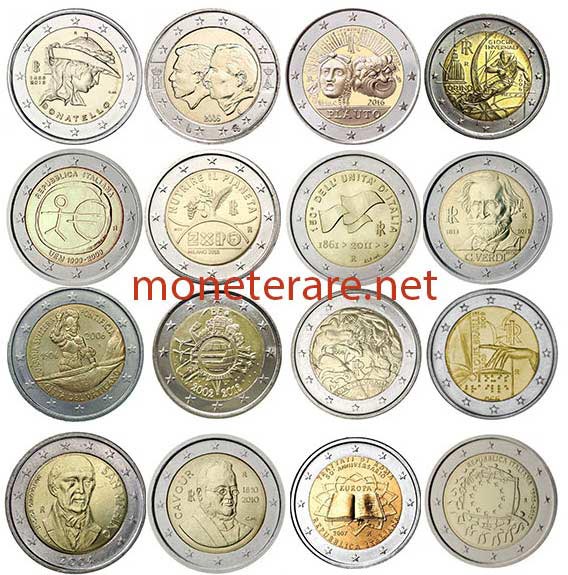
Commemorative coins, as the term suggests, are 2€ coins representing a significant event. A prime example is the Greek 2€ coins issued for the 2004 Olympics, commemorating that specific event.
Among these coins, the most sought after today include Finland 2004, Slovenia TDR 2007, and those from microstates such as Monaco, San Marino, and Vatican City.
Italy, on the other hand, holds almost the record for the number of commemorative coins issued, all of which can be found on the 2 Euro Italy page.
Regarding commemorative coins, it’s also important to mention common issues. These are commemorative coin issues jointly released by all member states for events of significant importance to the Union.
These coins are usually identical across countries, except for the specific country’s name, which is always indicated.
So far, there have been three common Italian commemorative 2€ issues: the 50th Anniversary of the Treaties of Rome, EMU 2009, and the 10th Anniversary of the Euro’s Introduction into Circulation. We’ve discussed this topic extensively on the 2€ Commemorative Coins page.
The Euro Starter Kit
Let’s now discuss the Euro Starter Kits. These are sealed plastic bags containing Euro coins in all eight denominations.
These Starter Kits were specifically created to help people in newly joined Eurozone countries familiarize themselves with the new currency. In this way, individuals could begin to understand the denominations, shapes, sizes, and values of the coins.
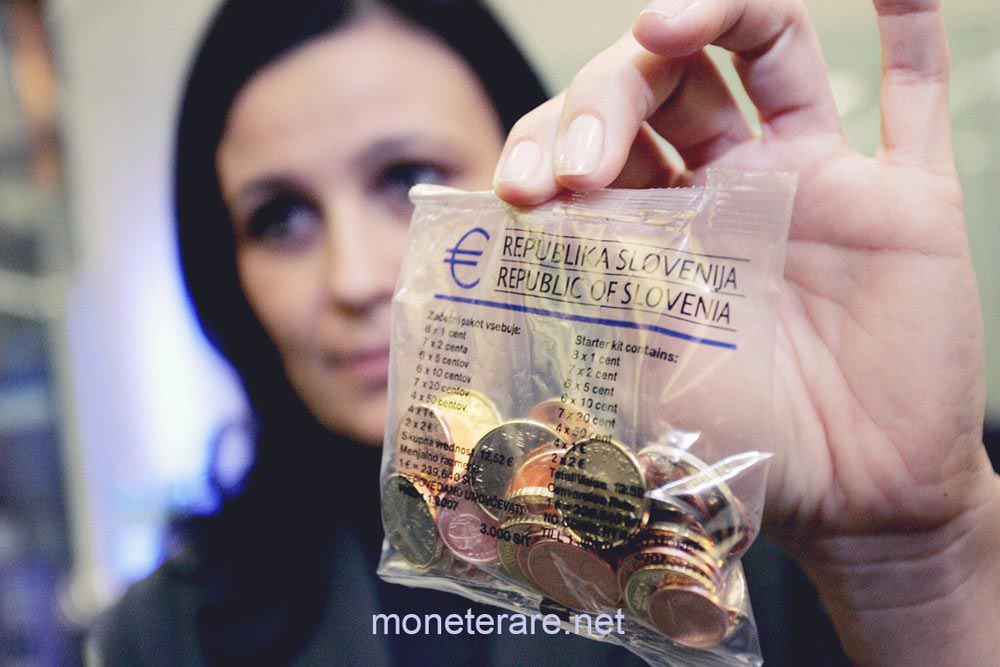
There are two types of Euro Starter Kits. The first is for “regular citizens,” as described above. The second is intended for merchants and usually contains a larger number of coins, which are bundled in rolls instead of bags.
Distribution of Starter Kits began in 2001. In that year alone, during the introduction of the Euro in the first 12 countries, over 150 million kits containing approximately 4.2 billion coins worth 1.6 billion Euros were distributed.
In Italy, for the transition from the Lira to the Euro, 30 million Starter Kits were distributed. Many people were inspired to start their “Euro Collection.”
Value of the Euro Starter Kit
As we’ve seen, the Euro Starter Kits are essentially “starter packs” designed to introduce people to the new currency. In Italy, the Starter Kit contains coins in all eight denominations with a total value of 12.91 Euros.
Collecting is mainly focused on rarer Starter Kits. However, it is still possible to find Italian Starter Kits for sale at a value slightly higher than their original contents: roughly 20€ to 49€.
Coin Sets
Coin Sets, on the other hand, are a different topic. These are carefully designed packages containing the annual series of coins issued by each country.
As expected, these “cases” change every year, as the coins issued will be different annually.
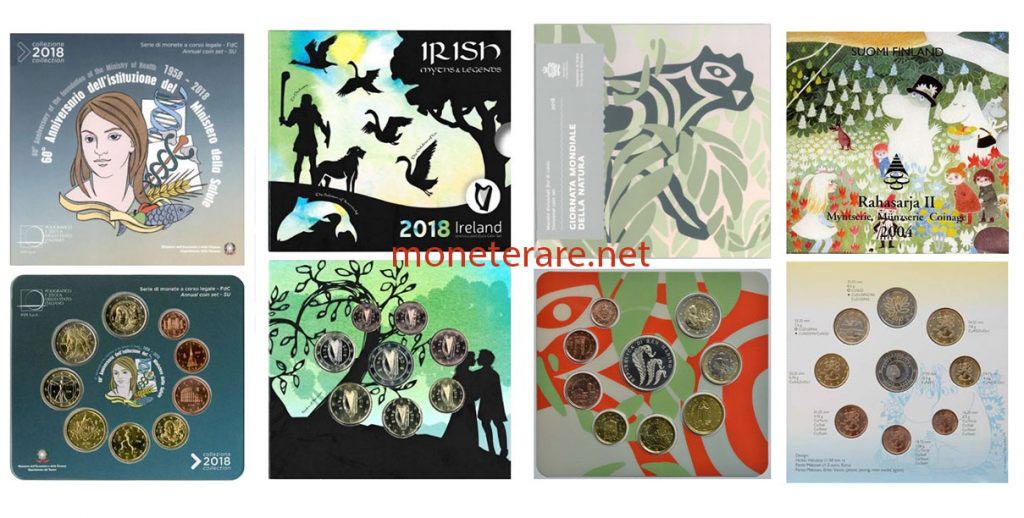
These sets may include silver coins, 2€ commemorative coins, or simply the 8 standard coins. In any case, they are unique pieces, as each year the country makes slight changes to perfectly match the newly issued coins.
Naturally, the coins and packaging are in Brilliant Uncirculated (BU) condition—the highest possible—and undergo rigorous inspections to detect even the smallest flaws. Proof Coin Sets, on the other hand, are typically issued in special cases with coins sealed and encapsulated.
Value of Coin Sets
The value of Coin Sets can be significant, depending on the series and the year of issuance. Generally, it’s possible to estimate the prices of these unique pieces.
A standard Italian Coin Set from the current year (2018) has an estimated value of around 30€. As you go further back in time, the value increases, with some Coin Sets exceeding 100€.
Proof sets, however, are a separate category, presenting higher values for the same production year and characteristics.

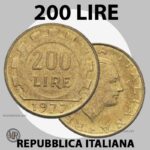
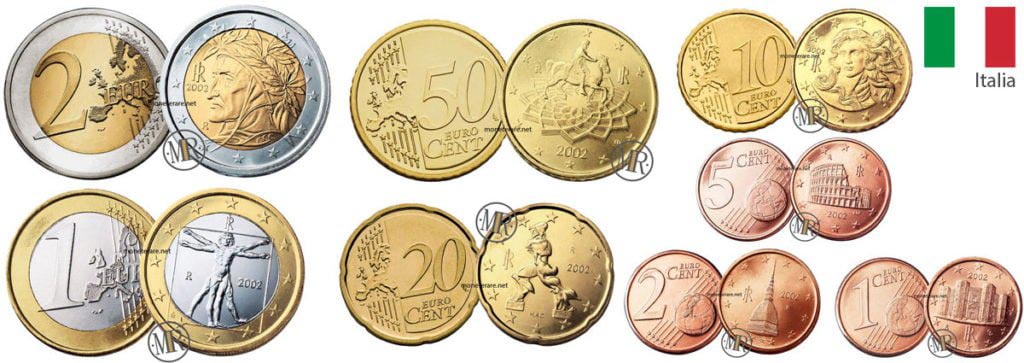
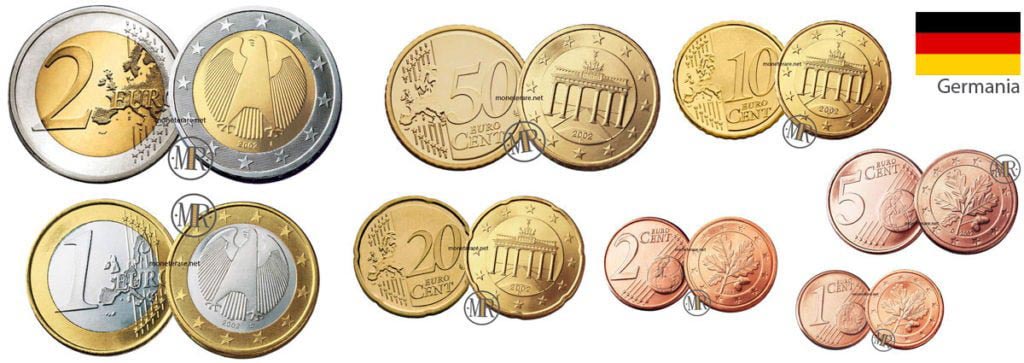

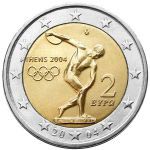
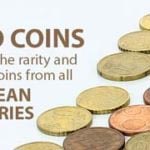
Considero muy útil esta publicación, particularmente para los no iniciados, o para los qué -como yo- llevan años guardando monedas, pero que nunca organizamos ni ponemos en valor, hasta que el hecho jubilación o discapacidad nos lo sugieren.
Agradecido por ello.